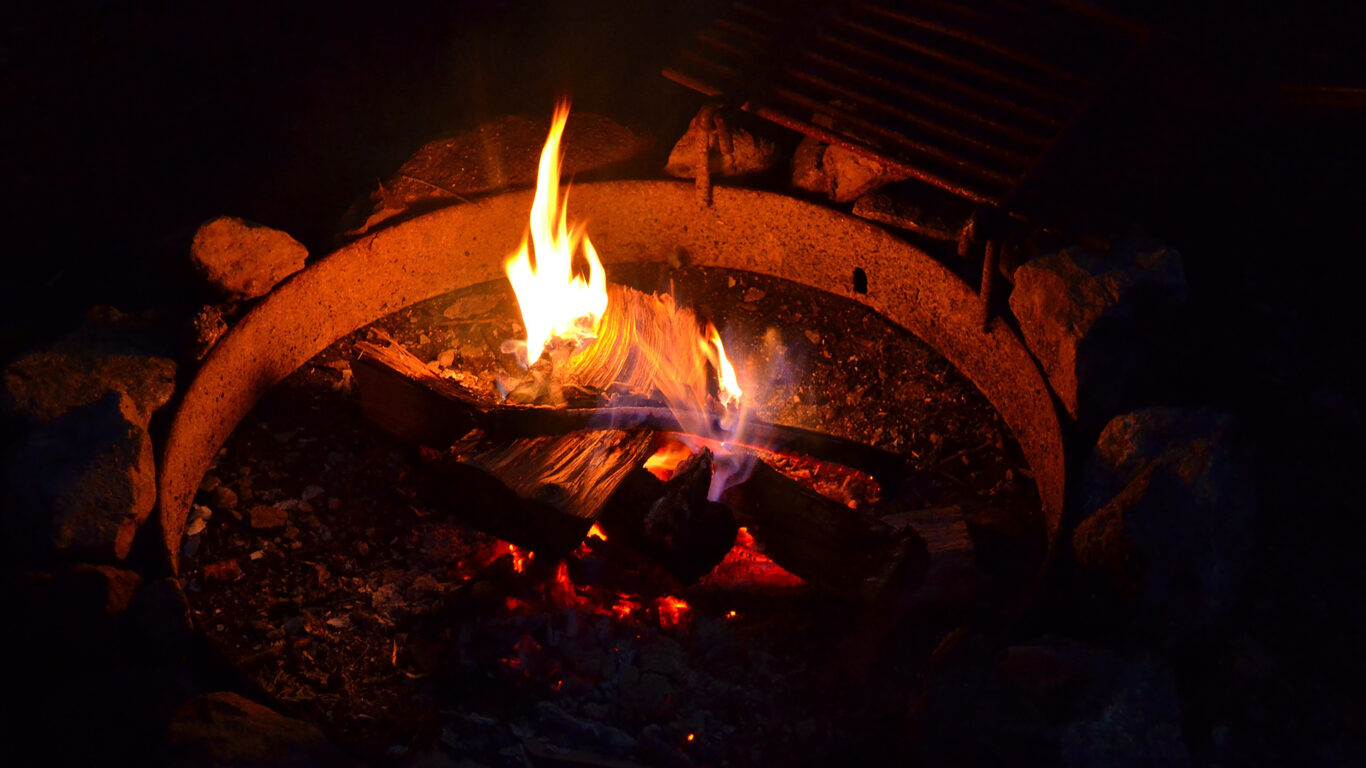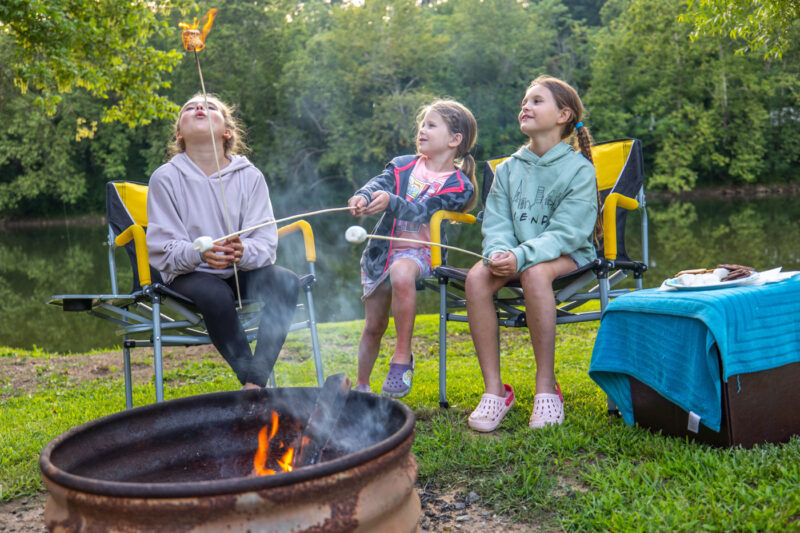
Campfires can be an enjoyable way to bond with family and friends, cook a meal, and experience nature first-hand. But to do it properly requires three components – fuel, sparks, and adequate oxygen flow – all of which must exist in order for your fire to last long enough for enjoyment. Without these essentials in place, any campfire is unlikely to thrive for very long.
But not all campfires are created equal.
Before lighting a fire, you’ll require tinder, kindling, and an incendiary device such as matches or flint and steel. Your chosen method for creating your campfire will determine its success – its lay determines its course.
The Teepee
Teepee-style campfires are quick and easy to start up, providing a stable source of coals. While not ideal for cooking purposes, this style works great for warming pre-prepared food or warming thermoses of coffee.
Materials needed to construct an efficient teepee campfire include tinder, kindling, and fuel logs. Tinder refers to any material that will burn quickly such as dry leaves or twigs; kindling refers to anything larger than tinder but smaller than firewood such as thinly split pine needles, cedar sticks or poplar bark. Fuel logs refer to any wood that eventually burns; arrange them in an organized pyramid- or teepee shape starting from underneath with larger logs at the base with smaller ones perpendicularly laid across them parallel.
Just above your teepee of kindling, stick three to four pencil-sized sticks into the ground to form a larger teepee shape and lean more kindling pieces against them. As your teepee burns, air will flow down from above into it, helping light your kindling. If winds become strong, rearranging kindling may help adjust for optimal results.
The Log Cabin
A log cabin fire layout is simple to create and produces a reliable fire with little ongoing maintenance. To start one off, place two pieces of firewood parallel to each other on either side, with another pair perpendicularly attached on top to form a square shape.
Then sprinkle tinder and kindling into your square, before stacking logs to form a pyramid with approximate pencil-width logs.
The Upside Down Pyramid
A well-constructed fire that lasts all night would be optimal as this would eliminate having to constantly refuel it with additional wood; creating one with minimal smoke production would even be better!
Traditionally, campfires are constructed using large logs at the bottom and gradually smaller ones as you build upwards in a pyramid-style formation. But inverting this approach creates a strikingly different look; larger logs occupy one layer on top while shorter ones alternate over on another layer.
This type of campfire is ideal for windy conditions, as its design creates a wall of tinder and kindling to deflect the wind away from your stack of wood. Additionally, its structure acts like a lean-to; with an angled “wall” helping keep moisture at bay. Just make sure that there’s always plenty of tinder available should you need additional fuel to be added later on!
The Star
When wood supplies are low, building a Star fire may be the perfect solution. Start by using whole, un-split logs and burn them slowly at the ends. This creates an efficient and long-lasting fire.
Choose 4 to 5 logs of any length, then build a small teepee fire configuration with kindling, then drag the logs around it. One end should face the fire and the other should face away from it, much like the points of a star, or spokes of a wheel. The center teepee fire will ignite the ends of the logs. As the fire burns, push the logs closer to the center to replace what has already been consumed.
In Conclusion
Your campfire’s shape will determine both its intensity and length of burn time, so to create one with lasting power start with a large base of logs before adding tinder, kindling, and eventually bigger pieces of firewood on top. Once your fire is lit make sure that it remains under supervision; never leave it burning unattended!
And always remember…
To fully take advantage of your campfire experience, ensure it’s built in an appropriate area, kept small, and extinguished completely before departing.

Recent Comments